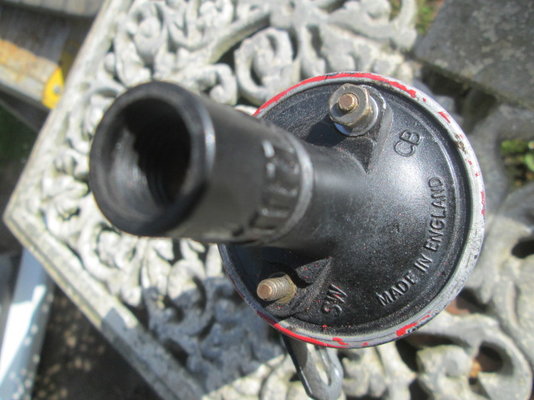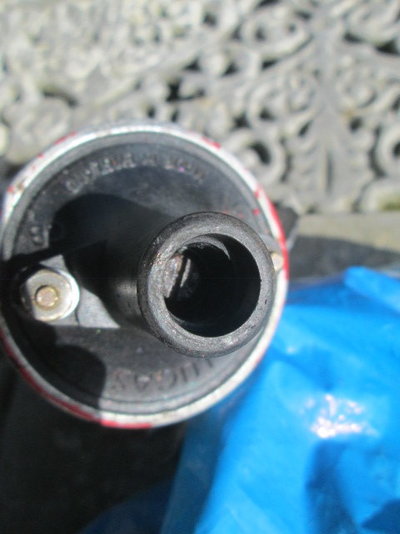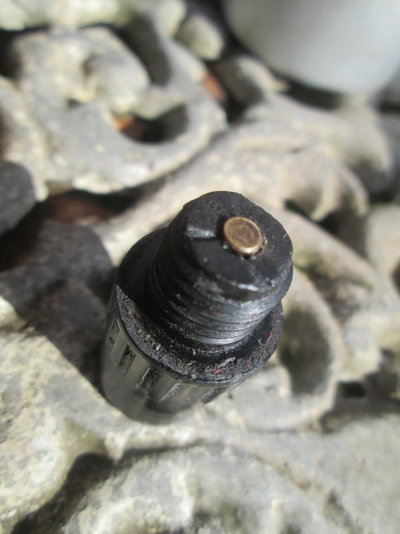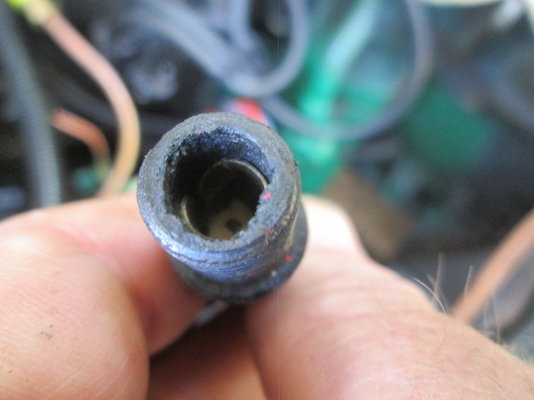Smallfry
HE's Spartacus.
- Messages
- 2,797
- Location
- Kent UK
Here's a thing for the more "mature" forum members. I have a new to me old Wolseley, and am working through all the bodgery !
It has been many years since I have had a petrol vehicle, let alone one with a distributor !
Picture shows the ancient ignition coil, marked CB and SW. Not seen that for years, been marked + and - for years now ! It was a screw in, rather than push in fitting. Screwed into the top of it, is an in line suppressor, with a chunk of carbon in it, the original leads would have been non resistive, and there was no such thing as resistor spark plugs back then (I think ?)
There were two lengths of screw in fittings, and this coil requires the longer one. The suppressor is the short one, SO there is a gap of about 8mm between the contacts, which obviously isn't right.
The king lead then screws into this suppressor. Older viewers will recall that the lead threaded through this fitting, the lead then had the insulation stripped back, then was passed through a brass washer and folded over. This then screwed up tight into the coil or suppressor to make the connection.
However, this has not been done, and a push in ferrule fitted to the king lead has been jammed into the screw fitting. This is not in far enough, so leaves ANOTHER gap of about 8mm between the connections, which again, isn't right.
ISTR back in the day, that if one was having trouble starting an engine, the plug leads were pulled off the plugs and left loose, which often resulted in being able to start it ? How would this work ? Increased resistance ? This car has electronic ignition fitted in the distributor and the spark easily jumps these gaps, so my question is, How do you think all this would affect the running of the engine, and the long term condition of the HT system ?




It has been many years since I have had a petrol vehicle, let alone one with a distributor !
Picture shows the ancient ignition coil, marked CB and SW. Not seen that for years, been marked + and - for years now ! It was a screw in, rather than push in fitting. Screwed into the top of it, is an in line suppressor, with a chunk of carbon in it, the original leads would have been non resistive, and there was no such thing as resistor spark plugs back then (I think ?)
There were two lengths of screw in fittings, and this coil requires the longer one. The suppressor is the short one, SO there is a gap of about 8mm between the contacts, which obviously isn't right.
The king lead then screws into this suppressor. Older viewers will recall that the lead threaded through this fitting, the lead then had the insulation stripped back, then was passed through a brass washer and folded over. This then screwed up tight into the coil or suppressor to make the connection.
However, this has not been done, and a push in ferrule fitted to the king lead has been jammed into the screw fitting. This is not in far enough, so leaves ANOTHER gap of about 8mm between the connections, which again, isn't right.
ISTR back in the day, that if one was having trouble starting an engine, the plug leads were pulled off the plugs and left loose, which often resulted in being able to start it ? How would this work ? Increased resistance ? This car has electronic ignition fitted in the distributor and the spark easily jumps these gaps, so my question is, How do you think all this would affect the running of the engine, and the long term condition of the HT system ?






